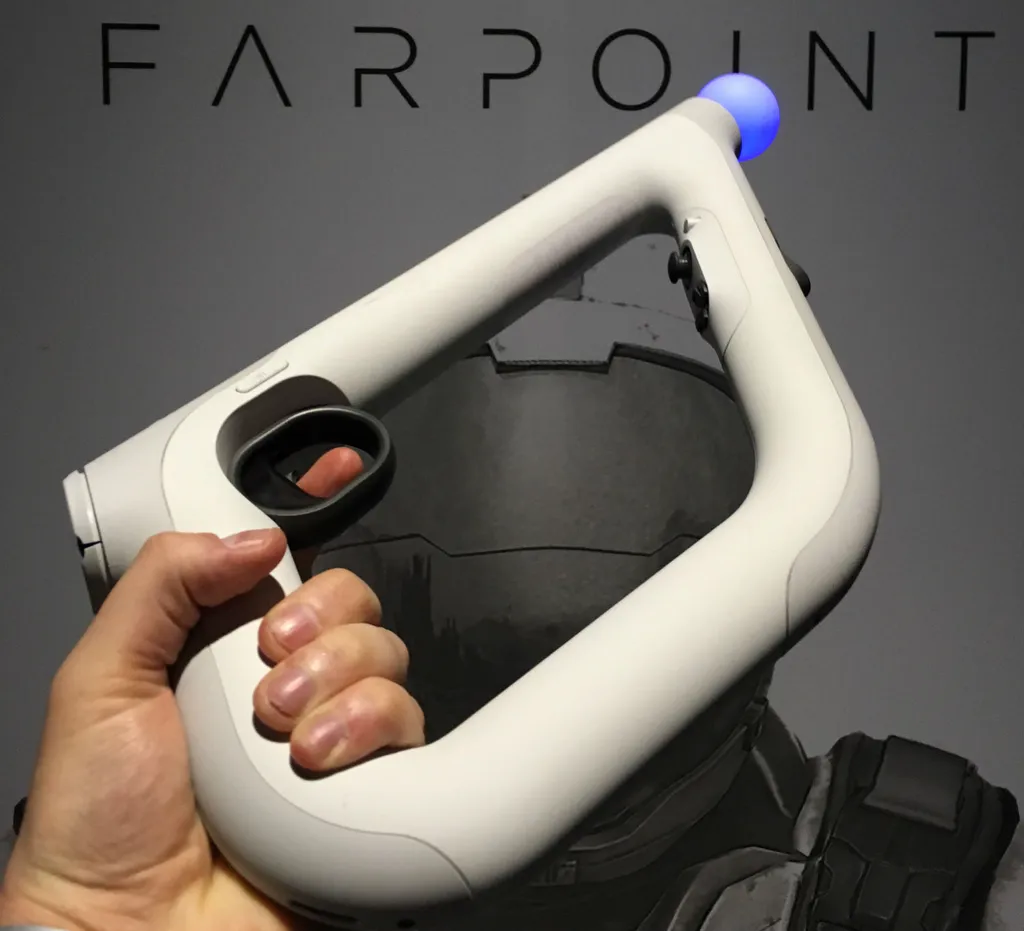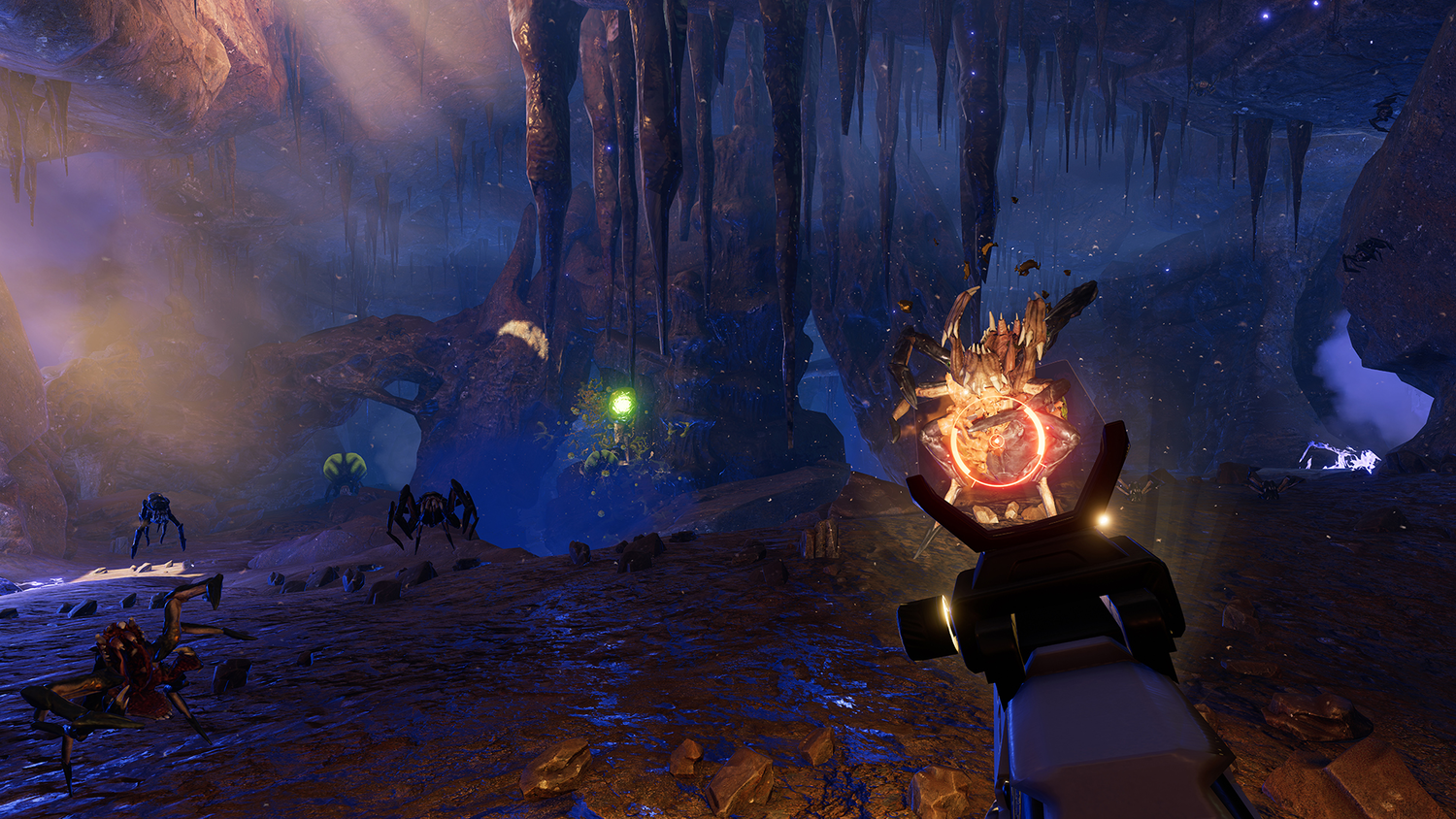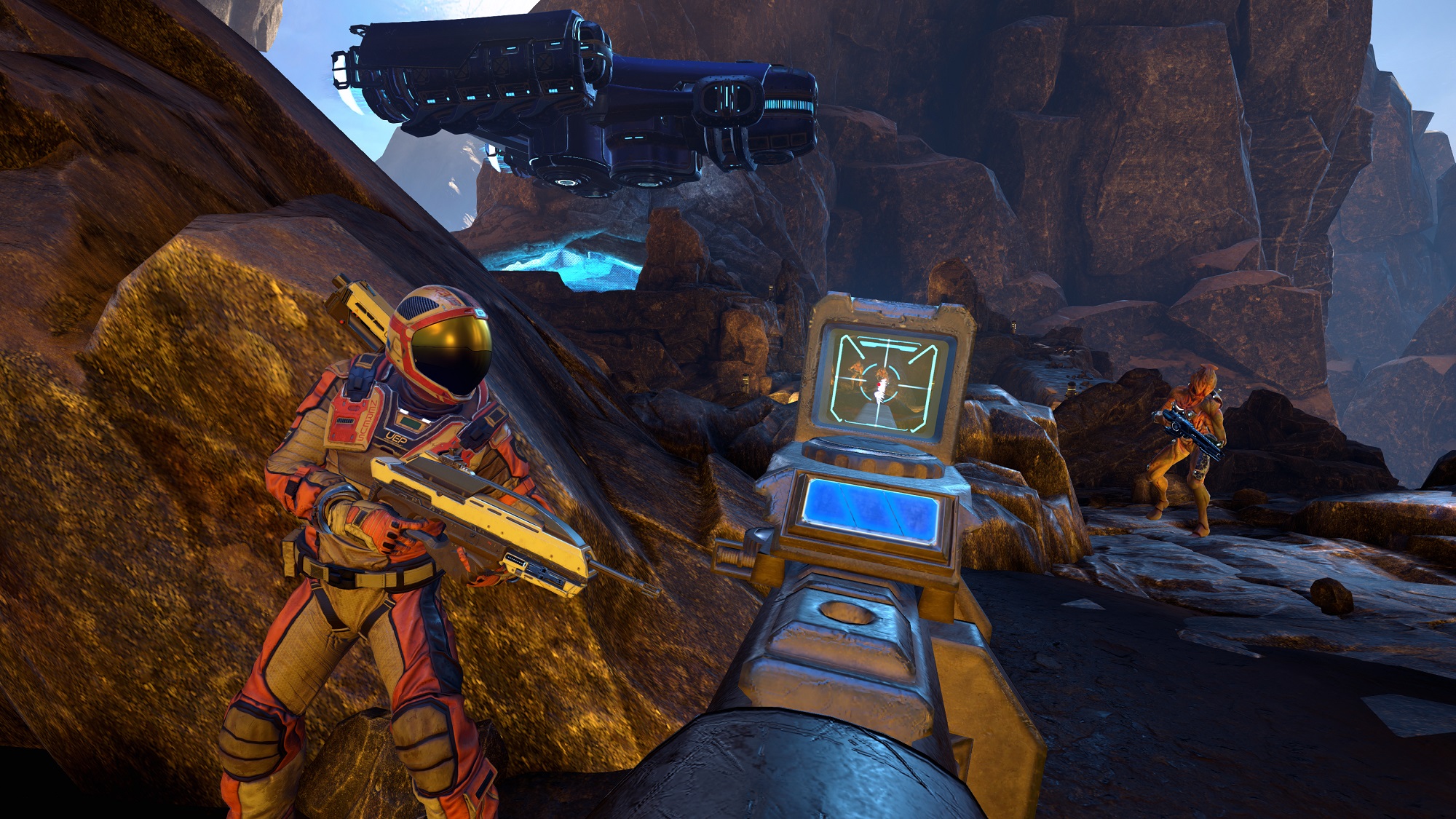Farpoint is a rare game. It’s rare in the sense that it’s one of the first truly made-for-VR titles that is 100% based on full analog stick movement without teleporting around. But most importantly, Farpoint is rare in the sense that it really feels like it has the polish and breadth of a AAA game.
Unlike in the case of PlayStation’s Move or Xbox’s Kinect, it seems like Sony is actually getting serious about VR. Even though the PlayStation VR (PSVR) headset released several months ago in mid-October, it felt more like a soft launch until recently. And finally, Farpoint feels like the big splash fans have been waiting for — although it isn’t as great as it could have been.
In Farpoint, you play the role of an astronaut that’s caught in a bizarre deep space anomaly that sucks you and two others into a disturbing vortex. After emerging on the other side you crash land on a strange alien world and set out on a journey to piece together what’s happened and where the other two survivors have gone. Most of the story is told through holographic conversations you discover along the way by scanning the environment and recorded camera footage from aboard spacecraft.
Narratively it gets the job done. This isn’t going to blow any minds or redefine the way video game stories are told, but it’s enough to keep you pushing through. I found myself caring about the main two NPC characters more than I have in previous VR titles and a major part of that is due to the stellar voice acting.
Facial animations are a step above the rest as well, but character’s body animations could use some work — especially for your character and his shadow. I’d advise trying not to look down too much because your space suit obscures your vision and admittedly the stiff, rigid shadow animations look a bit ridiculous.
Farpoint is easily one of the most elaborate VR-only games I’ve played so far that feels like it was designed to appeal directly to core gamers. The package includes a solid five-hour long campaign, replayable single player challenge maps, and an addictive cooperative wave-based survival mode. I’d have liked for the campaign to be a bit longer, but it tells a tight story well which is ultimately preferable over an elongated and bloated one.
The enemy variety felt fine for the most part, although it starts to grow a bit repetitive near the end. A big part of that has to do with the technological limitations of the platform. Since the PSVR is a forward-facing only device that means that the game’s developers had to make sure you don’t feel the need to turn completely around.
But if you’ve got the stomach for it you can enable turning controls using the Aim’s second analog stick, which felt great to me, but isn’t recommended for those easily susceptible to motion sickness. This option can use either snap turning or smooth turning. With full smooth turning unlocked I found myself able to easily sprint around levels and fire my shotgun while running backwards staring down the game’s largest beasts. In a way, it reminded me of playing DOOM when things really started to get intense. Unfortunately though, those moments seemed few and far between.
As effective as the campaign is when it’s clicking on all cylinders and not hitting occasional hardware hiccups, the real stars of the show to me were the cooperative multiplayer maps. Shooting side-by-side with a buddy, running around maps dodging enemy fire, and pushing forward one wave at a time is exhilarating. It takes all of the best high-action moments from the campaign and stacks them together while you’re back-to-back with a friend.
Regardless of game mode though, Farpoint really excels best when it makes you forget you’re holding a controller in your hand and you really feel immersed in the world around you. Little things like lifting the gun over my shoulder to switch weapons, holding the stock up to my shoulder to aim down the sights, and bobbing my head out of the way to avoid returning fire, really sold me on the illusion of the adventure. But again, the PSVR and its tracking camera are far from ideal.
The camera’s tracking area is displayed as a field in front of you during setup with a clear ceiling and floor. In the best conditions lifting the Aim over my head or leaning down with it below my waist results in a loss of tracking. After prolonged play I also noticed slight drifting, causing the game to think I was aiming off-center when I was actually holding it straight. This immediately took me out of the experience.
But to be clear, the controller itself, is fantastic. As silly as it looks, it feels amazing to hold, all of the buttons are perfectly placed (and entirely ambidextrous) and I never once felt the need to peek under my visor and see where my buttons were. I held the gun and everything just felt perfect. And if you’re not planning on picking up the Aim, then I might even go as far as saying to wait until you can do so to play Farpoint at all. While it does support the DualShock 4 as an option, its inclusion is atrocious. Instead of using a scheme similar to Rigs or Resident Evil 7 (head tracked and analog stick aiming) the game asks you to hold up the controller and aim it in place of the Aim. It feels silly and awkward.
Again though, that being said, it’s worth restating how great the Aim feels. Holding the Oculus Touch controllers or HTC Vive wands out in front of me, floating, pretending to be wrapped around a gun, just isn’t a good enough replacement for actually holding something in my hand. In that sense, when paired with the Aim as intended, Farpoint surpasses some of the best VR games on other platforms from a pure immersion perspective. But then you’re occasionally reminded of the PSVR’s inferior tracking from time-to-time to send you crashing back to earth.
Farpoint’s best moments are some of the best slices of entertainment I’ve seen in VR to date. When the action is pumping and the tracking is cooperating, I forget I’m even holding a plastic peripheral at all and truly feel immersed in the world itself. Shooting feels great and the atmosphere is convincing. But then the levels start to feel repetitive, the campaign is a bit brief, and the design limitations rear their ugly head. For better and for worse, based on current capabilities, Farpoint is the game that PSVR deserves — an exhilarating, but flawed, AAA-quality VR shooter.
Farpoint is available starting May 16th as a standalone title for PSVR at the price of $49.99, or as a bundle with the Aim Controller for $79.99. Read our Content Review Guidelines for more information on how we arrived at this score.





























